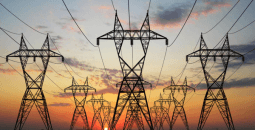

In an attempt to move closer to cost reflectivity, Eskom hopes to increase its return on assets for FY2026 from R15 616 billion in the current year to R42 669 billion.
However, this is still only at a rate of 4%, far below Eskom’s current cost of capital of 10.8%, the utility told Moneyweb.
According to its tariff application for the three years ending 31 March 2028, which was published by energy regulator Nersa on Tuesday and asks for an average tariff increase of 36.15% next year, Eskom wants to increase the return on assets to 6% over the period.
If the application is granted as is, Eskom’s revenue will increase to more than half a trillion rand in FY2028.
Nersa also published a discussion document with several questions relating to the application and is awaiting written comment on or before 1 November 2024.
It further plans to hold public meetings in every province between mid-November and early December, during which Eskom will be given an opportunity to explain its application.
The regulator will decide on the application early next year, in time for Eskom to comply with the legislative requirement to table it in parliament by 15 March.
Affordability concerns
The publication comes against the background of fierce criticism of the 36.15% average increase Eskom is seeking for FY2026. The number leaked out earlier has sparked resistance, with various political parties agreeing during a parliamentary debate on the matter that it is unaffordable.
The increase Eskom wants to apply to municipalities it sells bulk electricity to amounts to 43.55% due to the delayed implementation on 1 July to align with the municipal financial year. This necessitates the recovery of Eskom’s costs over nine months instead of 12, as is the case with other consumers. Their increases apply from 1 April every year.
Eskom proposes a further average tariff increase of 11.81% for FY2027 and 9.1% for FY2028.
The Electricity Regulation Act allows Eskom to recover all efficiently incurred costs plus a reasonable margin through electricity tariffs.
Nersa is tasked with scrutinising the application to ensure Eskom’s costs and investments are prudent, used, useful, known, and measurable. It must further balance the utility’s needs with end-users’ needs.
Affordability is therefore a big consideration for Nersa.
Electricity and Energy Minister Kgosientsho Ramokgopa has publicly admitted that electricity tariffs are becoming increasingly unaffordable for poor and even middle-class South Africans, who have to choose between buying electricity or buying food.
Utility ‘needs’ cost-reflective tariffs
In its application, Eskom motivates the increased rate of return, saying the R254 billion debt assistance from national government is not enough to restore its financial sustainability. It needs cost-reflective tariffs to lighten the burden on the fiscus.
In its application, Eskom states: “It may be tempting to conclude that by limiting electricity tariff increases and requiring that Eskom and/or government borrow the revenue shortfall, it is possible to minimise the negative impacts of rising electricity prices on gross domestic product (GDP) and employment growth in the short-term.
“It is ill-advised for Nersa to continue to limit Eskom’s tariff increases below cost-reflective levels.
“Tariff increases should at least be sufficient to transition Eskom towards a more cost-reflective electricity tariff (prudently and efficiently incurred) over the next few years.”
It says it needs the increased return to “partly cover expansion and repairs that are urgently required”.
Eskom is providing for a 16% increase in its coal cost for FY2026 and assumes a 61% energy availability factor marginally higher than the average 60% for the calendar year to date.
It put its open-cycle gas turbine (OCGT) usage at a load factor of 6%, which is in line with what Nersa previously approved. It estimates a R9 billion drop in OCGT fuel cost.
IPP costs
The proposed expenditure on buying energy from independent power producers (IPPs) shows a small increase to R67 billion in FY2026, up from R56 billion in the current financial year. This is due to a delay in projects coming online.
The IPP cost is passed on to the consumer in terms of the regulatory framework. Eskom’s power purchase agreements with the suppliers must be pre-approved by Nersa, which scrutinises the costs at that stage.
Eskom’s total IPP costs will, however, increase dramatically to R110 billion in FY2028, and in the next year Eskom expects it to surpass its primary energy cost as more renewable projects become operational.
Regulatory clearing account award
Eskom points out that almost R17 billion of the R455 billion revenue it applies for for FY2026 relates to a court order and regulatory clearing account award by Nersa. These are amounts Eskom was entitled to in previous years that have only become payable in the next financial year due to mistakes by Nersa in its earlier determination and actual costs exceeding Nersa’s revenue provision.
Of the 36% average increase, 5.7 percentage points represent a subsidy to compensate for negotiated pricing agreements with struggling large industrial customers.
According to Eskom, Nersa has approved an additional 10 such agreements that will be implemented from FY2026. The approvals are in terms of a framework of the Department of Mineral Resources and Energy to assist such customers in remaining globally competitive and retaining jobs. – moneyweb.co.za